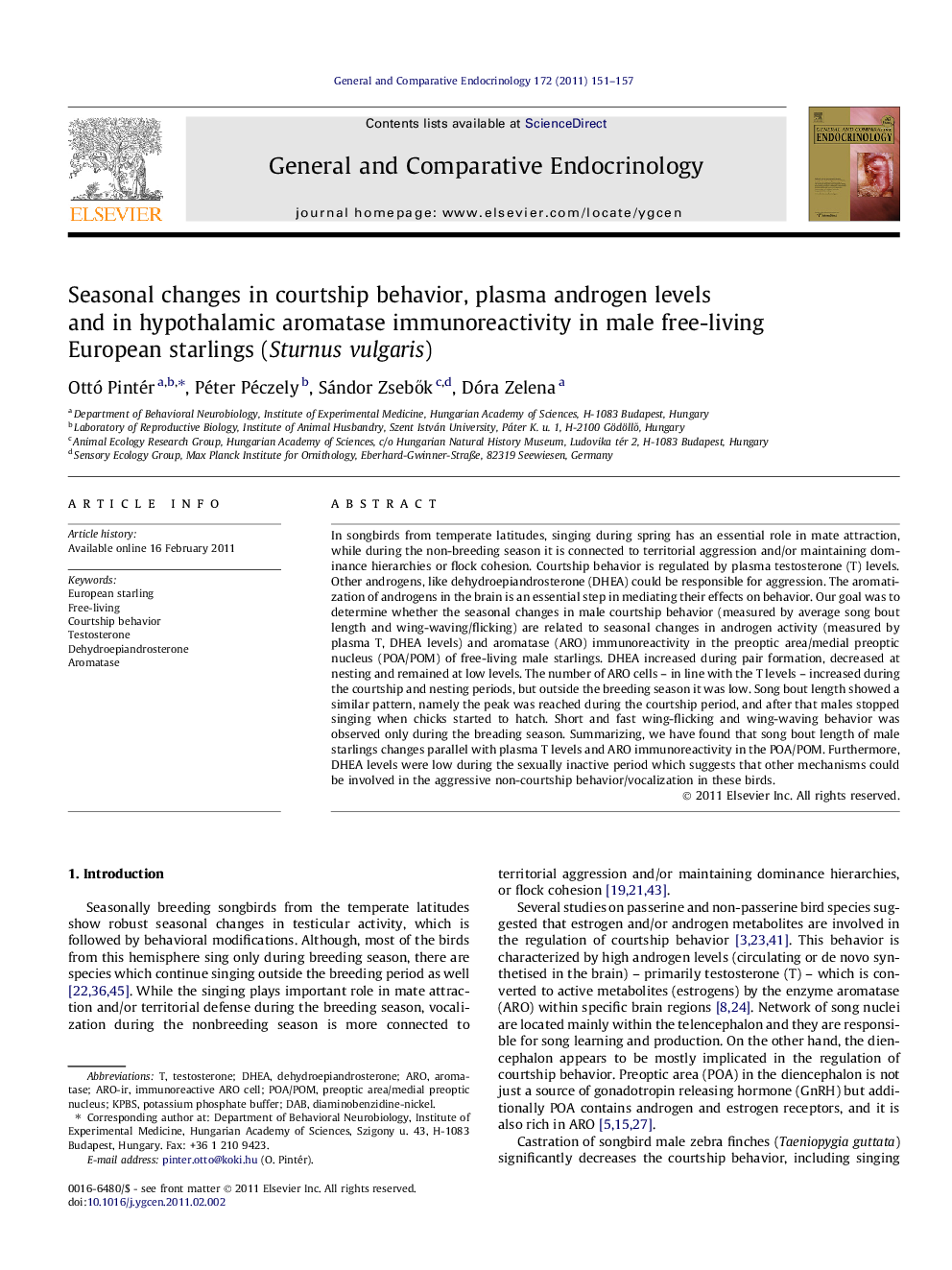| کد مقاله | کد نشریه | سال انتشار | مقاله انگلیسی | نسخه تمام متن |
|---|---|---|---|---|
| 2800868 | 1156131 | 2011 | 7 صفحه PDF | دانلود رایگان |

In songbirds from temperate latitudes, singing during spring has an essential role in mate attraction, while during the non-breeding season it is connected to territorial aggression and/or maintaining dominance hierarchies or flock cohesion. Courtship behavior is regulated by plasma testosterone (T) levels. Other androgens, like dehydroepiandrosterone (DHEA) could be responsible for aggression. The aromatization of androgens in the brain is an essential step in mediating their effects on behavior. Our goal was to determine whether the seasonal changes in male courtship behavior (measured by average song bout length and wing-waving/flicking) are related to seasonal changes in androgen activity (measured by plasma T, DHEA levels) and aromatase (ARO) immunoreactivity in the preoptic area/medial preoptic nucleus (POA/POM) of free-living male starlings. DHEA increased during pair formation, decreased at nesting and remained at low levels. The number of ARO cells – in line with the T levels – increased during the courtship and nesting periods, but outside the breeding season it was low. Song bout length showed a similar pattern, namely the peak was reached during the courtship period, and after that males stopped singing when chicks started to hatch. Short and fast wing-flicking and wing-waving behavior was observed only during the breading season. Summarizing, we have found that song bout length of male starlings changes parallel with plasma T levels and ARO immunoreactivity in the POA/POM. Furthermore, DHEA levels were low during the sexually inactive period which suggests that other mechanisms could be involved in the aggressive non-courtship behavior/vocalization in these birds.
Research highlights
► In male starlings, singing in spring is associated with wing-waving/flicking.
► Testosterone levels and aromatase immunoreactivity change parallel with singing.
► Vocalization without wing-waving/flicking characterize the non-breeding season.
► Testosterone and dehydroepiandrosterone levels are low in the non-breeding season.
► Androgens are not the exclusive regulators of courtship and non-courtship behavior.
Journal: General and Comparative Endocrinology - Volume 172, Issue 1, 15 May 2011, Pages 151–157